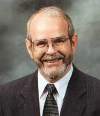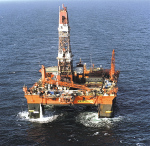What's happening in drilling
Here’s to a good year for drillingIt’s great to see drilling on the increase after all these years of ups and downs – mostly downs. This issue summarizes the good news with reports of drilling activity increases everywhere. The U.S. rig count will be up 22% to the highest level in 16 years; drilling outside the U.S. will be up 7%; and the U.S. Gulf will see a healthy 14% increase, pacing offshore increases in all worldwide areas. Utilization figures haven’t quite reached the point where we will see much newbuilding, but that can’t be too far away, as the aging fleet tries to meet demands for increased reserves, particularly for North American gas. The bottom line seems to be, with inevitable energy demand increases, there just isn’t that much available – at prices people can afford. Sorry, wrong number. I realize this will be too late to help many people confused by the note in this column in January about Canadian worker shortages. That item closed with a telephone number for people to call regarding drilling contractors looking for rig hands. Unfortunately, that number was no longer in service as the Canadian Association of Oilwell Drilling Contractors had ceased that service to its many members at year-end. I could have found that out by trying the number – should have learned by now to do that.
Wrong photo. As long as I’m apologizing, if you’re interested in semisubmersibles, you should know that we ran the wrong photo of Smedvig’s West Alpha in our December 2000 Marine Drilling Rigs 2000/2001 directory. The accompanying photo is the correct one. Sorry about that. New derrick. Rotterdam-based Huisman-Itrec has designed, built and demonstrated the Multi Purpose Tower (MPT), a drilling "tower" that can be used for more than one operation. Drilling operations will be the main function, but with adjustments using tensioners or other applications, it will be suited for, e.g., coiled tubing, Flexlay and J-lay. The tower is equipped with active and passive heave compensation, dual drawworks, sandline winch with 4,600 m of cable, a splittable block and two drilling winches. The drawworks are electrically driven and fitted with active heave compensation. The system consists of two drums, each driven by a gearbox and a 400-kW electromotor. If one drum fails, the operation can be continued using the other drum. Another advantage of two drums is that the amount of cable wound onto the drum and cable speed are halved, compared to using one large drum. The passive compensator comprises two cylinders, located inside the tower. The redundancy aspect is also valid here; i.e., if one cylinder fails, the operation can be continued using the other one, however only at half stroke. The sandline winch located inside the tower permits tools like measurement instruments to be lowered. The splittable block is a special item, providing the possibility of modifying the number of falls in the block between crownblock and traveling block. A maximum hook load requires 12-fall tackle in which all single blocks are attached to the traveling block. The maximum speed requires a 4-fall tackle configuration. An advantage is that speed of the traveling block can be increased, for example, when building up or breaking down the drillstring. This new system obviously needs some illustrations to show the functional parts – we’ll be doing that before long. If you can’t wait, check out the Web at: www.husiman-itrec.com. Offshore roadmap. There really aren’t roads offshore, but the U.S. Department of Energy (DOE) has used the name to identify a new product it helped prepare and now offers to the industry. In late November, DOE hosted a news conference aboard the Ocean Star (Offshore Energy Center) in Galveston, Texas, to announce the Offshore Technology Roadmap, the first step toward full exploration of the ultra-deep waters of the Gulf of Mexico. The roadmap is future technology to accelerate growth in exploration and production to achieve national energy security and stabilize energy supplies. The document is the result of five workshops held last July and August that included representatives of oil/gas companies, investors, technology suppliers and service companies, national labs, federal / state governments and non-governmental organizations. DOE drafted the document identifying barriers to developing ultra-deepwater oil/gas resources, as well as potential technologies and investment requirements that could accelerate that development. The roadmap outlines both evolutionary and
revolutionary technologies that could help improve the success of exploring for and producing deepwater
resources as well as protecting the environment. Innovative systems engineering and design processes are
identified along with improvements in the infrastructure for offshore operations. For more information, try
the Offshore Energy Center, Houston: Tel: 713 464 0510; Fax: 713 507 5025; E-mail: oecstar@aol.com.
|
- Applying ultra-deep LWD resistivity technology successfully in a SAGD operation (May 2019)
- Adoption of wireless intelligent completions advances (May 2019)
- Majors double down as takeaway crunch eases (April 2019)
- What’s new in well logging and formation evaluation (April 2019)
- Qualification of a 20,000-psi subsea BOP: A collaborative approach (February 2019)
- ConocoPhillips’ Greg Leveille sees rapid trajectory of technical advancement continuing (February 2019)




